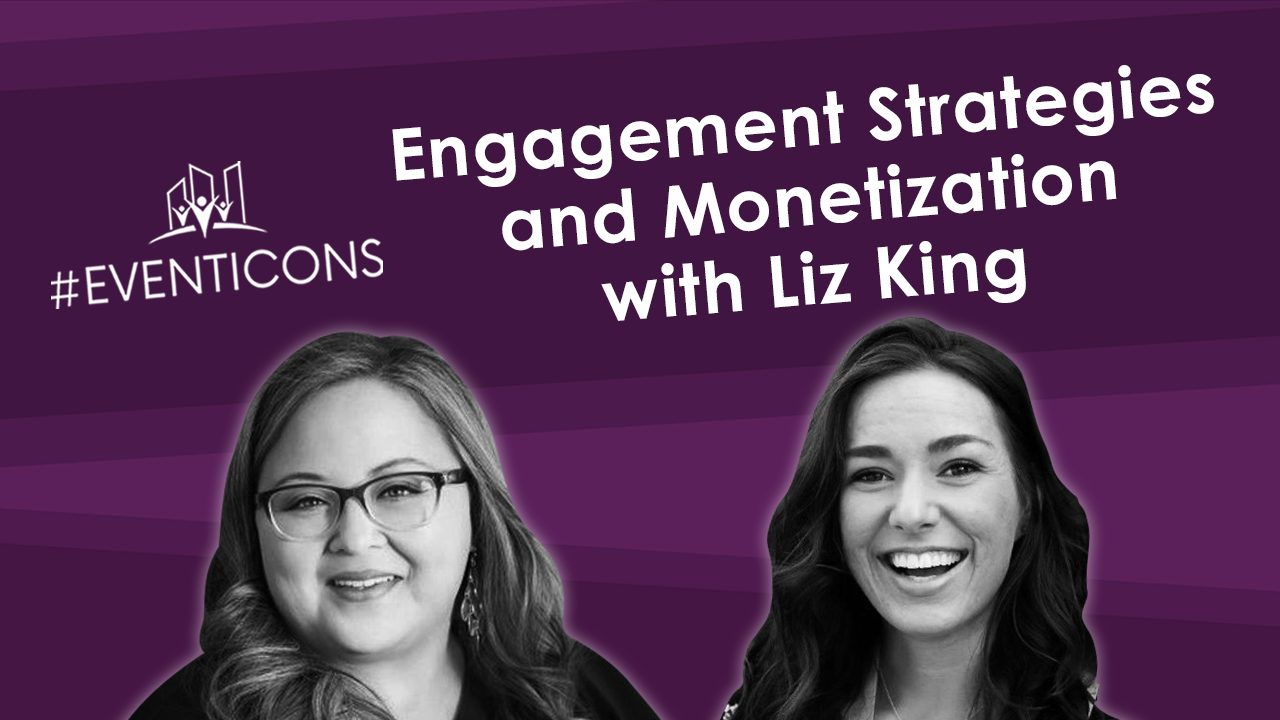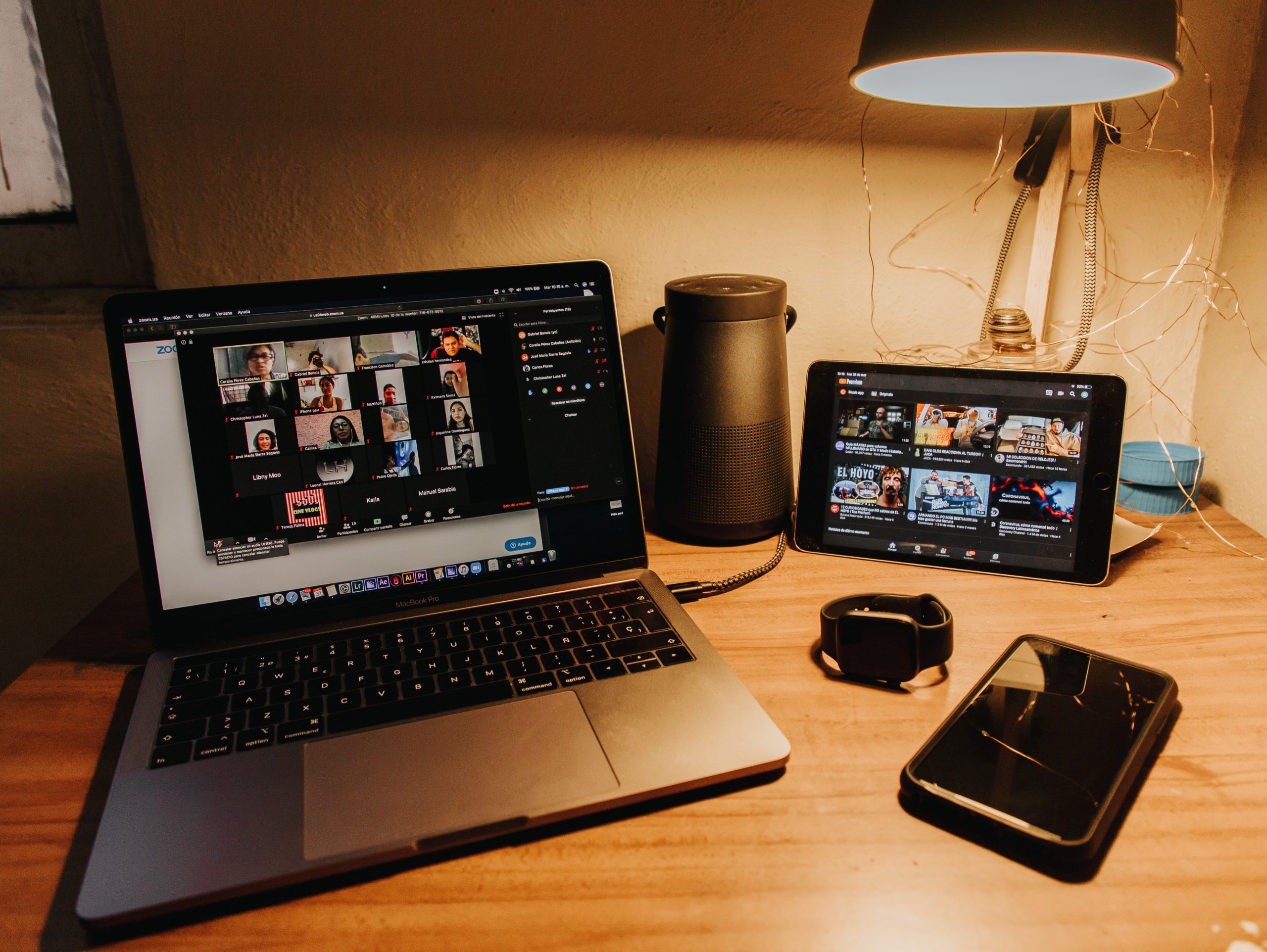Virtual events were all the rage last year, whether we liked it or not. While some adapted fast and organized extraordinary virtual events in 2020, many are still grappling with the new reality. But according to today’s #EventIcons guest, it’s high time we stop reminiscing about the past and start planning for the future!
Liz King Caruso is the CEO of Liz King Events and techsytalk. She’s a source of wisdom who has been doing virtual and hybrid events for much longer than the pandemic has been around. As an event strategist, she talked to Sarah about the importance of engagement strategies for virtual events as well as their monetization. As you’ll see, the two aspects of event planning are inextricably intertwined. Press play and join Sarah and Liz as they break down all there is to know about this hot topic.

Engagement Strategies For Virtual Events: We Have To Do Better!
Liz starts the conversation about engagement strategies for virtual events by saying we need to raise the bar. “As we look to 2021 from an engagement standpoint, we really have to think about doing things better. It has to be more interesting. I heard so much in 2020 about prerecorded content and simulive, but people don’t like that. It’s not going to last, in my opinion. I keep telling people stop calling it ‘the live events industry’. Live can be live in-person or virtual. Live events have not gone anywhere. It’s just that they have transitioned to the virtual space.”
When it comes to choosing between live and pre-recorded sessions, Liz strongly prefers the former. “The webinar culture ruined the idea of pre-recorded in-person events on virtual. The expectation that I can sign up for something I’m not even putting in my calendar because I already know you’re going to send me the recorded content or it’s going to be all recorded in the first place, makes me even less likely to join.”
In Liz’s opinion, an example of a great practice is StreamYard. “I love the ability for us to see comments and for us to hear from people who are watching. That is what makes it exciting. And then obviously, there’s program design elements. But live is the first piece of the puzzle.”
Monetization & Engagement Strategies For Virtual Events Go Hand In Hand
Liz opens up the discussion about monetization. “It’s really hard to get people to put their money down for something that they know is not live.” That’s why engagement strategies for virtual events are something organizers have to pay special attention to.
“If your in-person event was worth $349, your virtual event should be worth $349,” says Liz. “I think the two big problems with that are event organizers are not typically delivering the same kind of value they were in person because we are figuring it out. And quite frankly, even if you know what you want to do, the technology doesn’t really exist on the level that we want it to. The other piece is that we have to get people to believe that virtual is worth money. That’s where the question of engagement comes in. That’s why these two conversations always come up together.”
“If a person thinks that they’re going to get a ton of pre-recorded content, they’re not going to pay. We have to raise the level of quality that we’re giving. We have to do that for long enough that people realize it’s worth paying for. I think that events should be monetized, but I don’t think we’re going to just dollar for dollar right now,” says Liz. She shares an exemplary engagement strategy for virtual events: “I am having a lot of success with free access or lower cost access for live only, and then a higher price for community for recorded access for all these other perks.”
Virtual Is Not The Same As In-Person – And That’s Okay
“It’s okay if you’re not making all the money you were making on your ticket sales in the past. If you get that live engagement, it makes your sponsors happy and you can get more sponsored dollars. What you don’t want is everyone registering, but no one showing up. Most people are just not paying what they would pay for an in-person because the value proposition doesn’t match in their minds right now. We really have to change the value of what we’re offering first.”
“The problem is once a person has a bad experience, they’re not going to come back. They might’ve been a little bit gracious because it was COVID, but it’s not going to last forever. It’s one of the things I’m concerned about because virtual is not a one-to-one match for in-person. There are some things you cannot replace the in-person connection, but there also are a lot of things with virtual that really have huge power.”
Liz sees virtual as an essential part of the future, even when in-person events come back. “Hybrid is also going to be really important for us to bring back in-person. If we can nail virtual, we will see hybrid last forever. There will be the expectation that it’s both an in-person and virtual and that you can be either engaged in one or the other.”
The state of the events industry is archaic, though. “What we’re seeing in TV production is nowhere near the level that we’re doing in events. Now, we have years of catch-up in terms of education. How do you produce something that’s engaging, interesting, and different in order to catch up with the competition, for example, Netflix or everything else that’s digital already?”
The Challenges
In Liz’s opinion, companies are working really hard to catch up with the times. “There have been virtual companies for years. I keep saying that people just didn’t care about them, so they didn’t have that much funding and they didn’t really have much interest to evolve. Now, because everyone is virtual and everyone’s applications are growing exponentially, these companies are working tirelessly behind the scenes. I think stuff is coming, but we are desperately needing some better technology right now.”
One challenge that Liz points out is how disjointed the attendee journey is. “You’ve got your registrations in one place, the platform you’re using is another place, you’re streaming from another place… We are piecing things together. If a person registers in one place, then they have to go figure out where they go for the live event, and then within that, they have to figure out where the sponsors are – every step you’re losing people. And you’re also just losing interest. It would be nice to have like one tool that does it all.”
Building A Community
When thinking of engagement strategies for virtual events, event professionals have to know who their customer is. Right now, a lot of platforms seem interchangeable at this point. “They have to figure out what they really can do well, and then pitch that to the right planners who can help them get it to the next level. If everyone’s trying to be everything, this is not going to work out well.”
“You don’t want to take your in-person event and shove it into a virtual environment. From an engagement standpoint, we have to understand that a person’s attention span on virtual is totally not the same as it is in person.” Even when the content is incredibly engaging, there are a lot of distractions, either at home or on the internet. As Liz puts it: “You’re constantly one tab away from losing them. Content has to be dramatically shorter, days should not always be full days like they were with virtual. It’s about the ongoing engagement.”
If the sky was the limit, Liz would build a community. “The idea that you’re going to curate these groups of people who are connected year round. When mobile apps started coming out in like 2010, 2011, they were super popular and everyone was talking about year-round engagement. And it was just really hard to do because people only come into your event once and then, you don’t see them again for another year. With virtual, we’re going to see people who are just consistently providing content on a regular basis, providing value to an audience.”
What Do Engagement Strategies For Virtual Events Look Like?
Next up, Liz lists a few examples of what engagement strategies for virtual events can entail. She mentions the importance of the backdrop in the remote workplace design and the second screen technology. “There’s a lot of different applications. The idea is that if I’m watching the content here on my laptop, that I would have my iPad. That second screen is supplementing the content.
No conversation about engagement strategies is complete without mentioning XR. “We’re seeing some really interesting things now with augmented reality. Maybe I’m not just sitting in front of a computer screen for all these hours. What if I could make it look like I’m in someone’s booth or I’m in a session with other human beings? There are really interesting things that can be done here to get people to pay attention.”
In Conclusion: Don’t Look Back
Liz leaves #EventIcons with some expert advice. “I’ve always said you have to push yourself to learn things that you’re not comfortable with. That has never been proven more true than what we’ve seen in 2020. If you are still sitting there trying to figure out how to get back to doing what you always did, you are digging yourself a grave. Look to leaders like Endless Events and get them to share insights with you. It’s going to come in very handy because we are in for quite a ride for the next few years in the events industry.”












